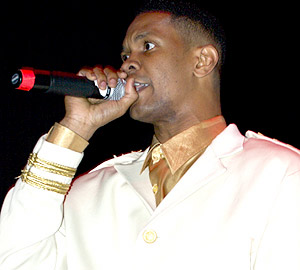Reggae 101: PANAMA, The Launching Pad for Reggae en Español
MIGRATION
In the early 1880’s, the world sought to bridge the gap between the eastern and western worlds by creating an intricate waterway spanning from the Atlantic Ocean to the Pacific Ocean. Panama, in Central America, was the ideal location for this project; and the “man power” came largely from the Caribbean islands closest to Panama—mainly, Jamaica.
Although many West Indians came to Panama from 1880 to 1914 in search of lucrative work and opportunity on the Canal, what they encountered were harsh working conditions and palpable segregation. Barracks were starkly different for European and white U.S. workers than they were for West Indians. In fact, as many as 72 West Indian men lived in a 50- by 30-foot hut, whereas European and white U.S. workers lived in relatively comfortable quarters and disproportionately held higher paying positions. Despite that, West Indians continued to flood Panama in waves and brought with them their culture, including their music.
CULTURAL FUSION
With hours of manual labor on the Panama Canal came hours of down time; a fertile ground for cultural fusion between Central American and West Indian culture. Cultivating this fusion was the fact that thousands of West Indians who stayed in Panama after completion of the Canal, were committed to preserving that West Indian culture. Thus, it’s no surprisethat when reggae from Jamaica, West Indies took the world by storm in the early- to mid-1970s, Panamanians gravitated heavily towards the genre.
From the mid-1970s to the early 1980s, Panamanian DJs played hundreds of popular reggae songs in the country’s parties and oftensang their own Spanish lyrics over reggae instrumentals. Inevitably, in 1984 the first Latin Reggae album was produced called “Treadmit.” The record included the first song by Latin Reggae legend Rastanini, titled “Padre Por Favor Educa a los Niños” (translated “Father Please Educate the Children”).
When Spanish-speaking reggae fans realized that a market for Spanish Reggae existed, Spanish Reggae artists began appearing out of the woodworks—particularly from Panama and Puerto Rico. Appropriately, Panama is responsible for most of Spanish Reggae’s early superstars, such as Nando Boom, Kafu Banton, and Aldo Ranks. These artists’ music all usually stuck to the more popular dancehall trend of reggae. However, there was one artist who arguably catapulted Spanish Reggae into a worldwide frenzy—El General.
El General’s global popularity, many argue, set the stage for a spate of Spanish Reggae artists. Performers, such as Daddy Yankee and Tego Calderon, contributed immensely to Reggaeton, which is an offshoot of traditional Spanish Reggae that mainly includes beat patterns from early 1990s dancehall “riddims.” With popularity came records sales; and within a few years of its inception, Spanish Reggae sold hundreds of thousands of records worldwide.
THE BIG PICTURE
To date, Spanish Reggae is one of the most widely listened to genres of music on Earth. Spanish Reggae, also known as Latin Reggae, is one of the few forms of music globally that has an enormous audience of listeners who do not speak the language in the music. Now that’s mass appeal!
Whether or not Panama is the birthplace of Spanish Reggae has been a debated issue for the past three or so decades. In this writer’s opinion, though, all signs point to Panama as Ground Zero for Spanish Reggae. Everything from the heavy West Indian cultural influence on Panama, to the first established Spanish Reggae artists being Panamanian, strongly suggest Panama played a huge, if not the biggest, role in the development of Spanish Reggae.




